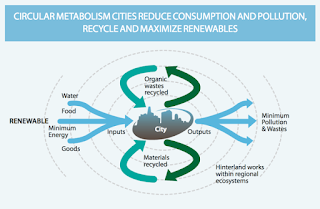Thursday, September 1, 2016
Regenerative Cities
The regenerative city applies ecological principles to urban redevelopment to make the city environmentally viable. It should make the city socially viable as well.
To make the regenerative city, therefore, it’s necessary to reimagine these flows of production and consumption, of transport and construction, through an ecological lens, and then to re-engineer them. This involves remaking the links that once existed between cities and nature (think of the orchards and market gardens that once ringed London), between urban systems and ecosystems.
The regenerative city is more than just being “sustainable.” Ecological debt has already degraded the soils, forests and watercourses that cities depend on. “Sustaining” implies no improvement on this degraded state, just as “carbon neutral” makes no inroads into our carbon debt.
Making the regenerative city (thenextwave)
Saturday, April 23, 2016
Bring Back the Euroloaf
Back in the 1970s a remarkable housing project was built in Toronto; The St. Lawrence neighbourhood has been described by journalist Dave LeBlanc as the “best example of a mixed-income, mixed-use, pedestrian-friendly, sensitively scaled, densely populated community ever built in the province”. Designed around principles espoused by Jane Jacobs (some even claim she had a hand in designing it; she didn't), it was a mix of low street facing townhouses and long mid-rise apartment blocks of a relatively consistent height. They looked a lot like buildings from Paris or Scandinavia and were nicknamed “Euroloaf” because they are kind of shaped like loaves of bread.
Subscribe to:
Comments (Atom)
